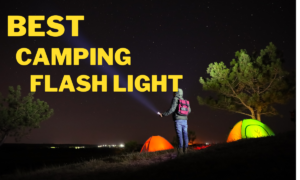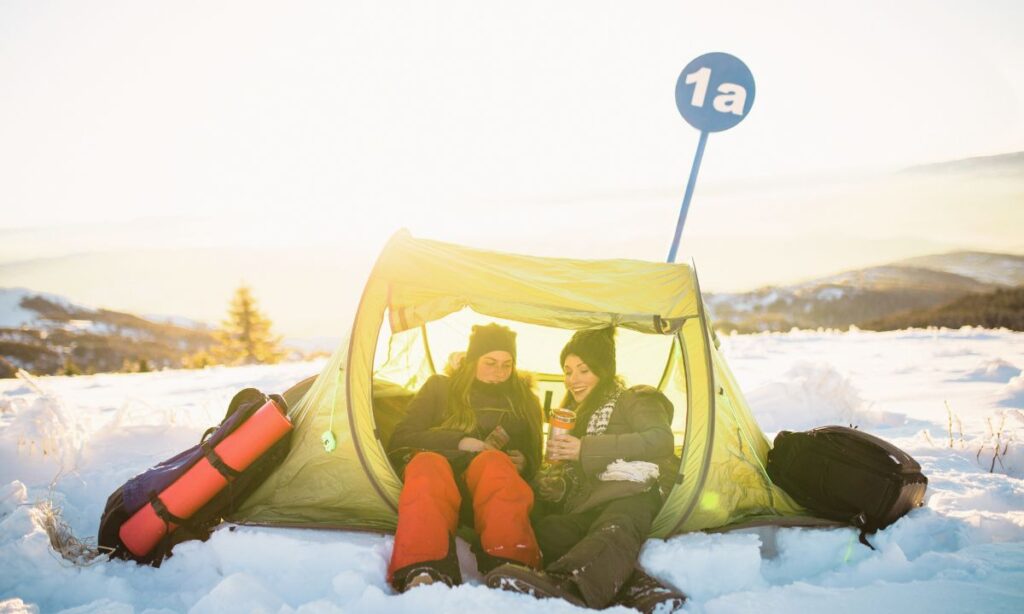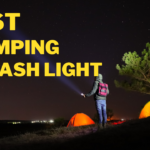Winter camping presents unique challenges, quite different from its summertime counterpart. One of the primary hurdles is dealing with the cold. Temperatures can plummet drastically. This turns an enjoyable experience into a struggle for warmth and comfort. This is where the crucial role of insulating your tent comes into play. You must need to know- how to Insulate a tent for winter camping.
Insulating a tent is not just about comfort; it’s a safety necessity. In frigid winter conditions, it’s essential to stay warm. This prevents hypothermia and other cold-related health risks. A well-insulated tent acts as a barrier against the cold. It traps heat and reduces the impact of the chilly outdoor environment.
In this article, we’ll explore practical and effective ways to insulate a tent for winter camping. We’ll discuss everything from selecting suitable materials to step-by-step insulation techniques. These tips will help ensure your tent is a cosy refuge from the winter chill. They’re for seasoned winter campers and also for people planning their first cold-weather outing. Let’s explore tent insulation to make your winter camping warm and memorable.
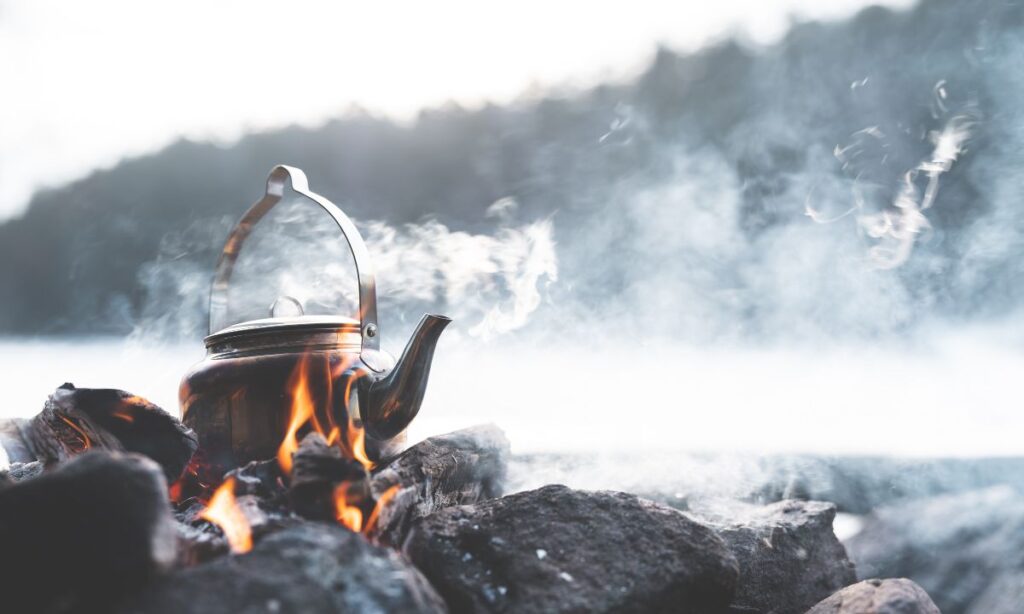
Basics of Tent Insulation
Winter camping presents unique challenges, even for the most seasoned outdoor enthusiasts. The serene beauty of a snow-covered landscape comes with plummeting temperatures. The weather is unpredictable. One of the most crucial aspects of ensuring a successful winter camping experience is the effective insulation of your tent. This is not just a matter of comfort but of safety as well. Extreme cold can lead to serious health risks like hypothermia. Proper insulation is an essential survival strategy.
Insulating a tent for winter camping involves more than just throwing in an extra blanket. Selecting suitable materials requires a strategic approach. Understanding heat retention principles and using insulation techniques do, too. This is to maximize warmth. This approach must not compromise safety. This blog post aims to guide you through the various steps of insulating your tent effectively. It covers choosing the right tent and employing innovative DIY hacks. This guide will provide valuable insights and practical tips to help you stay warm and safe while enjoying the beauty of winter camping. Are you a beginner preparing for your first winter adventure? Or are you an experienced camper looking to refine your skills? I can help.
In this post, we will discuss different insulation materials and the importance of ground insulation. We will also offer step-by-step instructions for insulating your tent. We’ll also cover essential gear, common mistakes to avoid, and additional tips for staying warm. By the end of this article, you’ll have the knowledge and techniques to insulate your tent like a pro. This will ensure your winter camping experience is not just bearable but downright cozy and enjoyable.
Preparation for Winter Camping
Winter camping, preparation is critical. Here’s a simple guide to help you get ready for your cold-weather adventure:
1. Choosing the Right Tent for Winter Conditions
Select a tent designed for winter or four-season use. These tents are made to withstand harsher conditions, such as heavy snowfall and strong winds.
Look for features like a sturdy frame, thick fabric, and minimal mesh. This helps keep the heat in and the cold out.
Confirm the tent is spacious enough to accommodate you, your gear, and insulation materials. However, do not make it too large, as bigger spaces can be more challenging to keep warm.
2. Essential Gear for Winter Camping
Sleeping Bags: Choose a sleeping bag rated for temperatures lower than expected. For instance, if you anticipate zero degrees, get a bag rated for minus ten.
Sleeping Pads: Use insulated sleeping pads. These not only provide comfort but also act as an essential barrier between you and the cold ground.
Layers of Clothing: Dress in layers you can easily add or remove. Include a moisture-wicking base layer, an insulating middle layer, and a waterproof outer layer.
Accessories: Remember hats, gloves, thermal socks, and boots. These small items play a significant role in keeping you warm.
3. Weather Considerations and Safety Tips
Check the Forecast: Always keep in head the weather forecast before heading out.
Inform Someone: Inform your plan to a friend or family member, including where you’re going and when you expect to return.
Emergency Kit: Bring an emergency kit with essentials like a first aid kit, a whistle, a flashlight, and extra food.
Hydration and Nutrition: Staying hydrated is crucial, even in cold weather. Also, bring enough high-energy food to keep your calorie intake up.
Stay Dry: Wet conditions can lead to hypothermia. Keep dry by avoiding sweating and changing out of wet clothes immediately.
Focus on these critical aspects of preparation. It can ensure a safer and more enjoyable winter camping experience. Remember, the cold can be challenging, but winter camping can be an extraordinary adventure with the right gear and knowledge.

How to Insulate a Tent for Winter Camping : Step by Step
Step 1: Selecting the Right Insulation Materials
When preparing for winter camping, the first thing to consider is insulation materials. You have several options:
Foam Pads: These are great for the tent floor. They provide a solid insulation layer between you and the cold ground.
Reflective Blankets: These shiny blankets reflect body heat to you, making them perfect for lining the inside of your tent.
Insulated Tarps: These are heavier but excellent for extra warmth. You can place them over your tent or under it.
Step 2: Ground Insulation Techniques
The ground can be the biggest thief of heat in your tent. Here’s how to insulate it:
Lay Down a Groundsheet: This goes under your tent. It’s a barrier against moisture and cold from the ground.
Use Foam Pads: Place these inside your tent, under your sleeping area. They add a cozy layer that blocks the cold.
Step 3: Insulating the Tent Walls and Roof
Your tent’s walls and roof are just as important. Here’s what to do:
Attach Reflective Blankets: Line the inside of your tent with these. They’ll bounce your body heat back to you.
Use Specialized Liners: Some liners are made just for tents. They add an extra layer of warmth. Think of them as a blanket for your tent.
Step 4: Managing Tent Ventilation
Keeping warm doesn’t mean sealing off your tent completely. It would be best if you had some airflow to prevent condensation:
Find a Balance: Open a small vent or crack a door. Just enough to let some air circulate.
Check for Condensation: Increase ventilation if you see moisture inside your tent. Dry air is warmer than damp air.
Following these steps’ll create a cozy, warm space inside your tent. Remember, winter camping is all about being prepared. With the proper insulation, you’ll enjoy a comfortable and safe camping experience. This is true even in the chilliest conditions. Stay warm and happy camping!
DIY Tent Insulation Hacks
Camping in the winter can be a great adventure, but it also means facing the cold. Don’t worry if you can’t get fancy gear. You can still keep your tent warm with some brilliant DIY hacks. Here’s how you can use everyday stuff to insulate your tent.
Bubble Wrap
Yes, the stuff you pop for fun! Bubble wrap is excellent for insulation. Cut it to fit the floor of your tent. This creates a barrier that keeps the cold ground from chilling your tent. Plus, it adds a bit of cushioning!
Emergency Blankets
Those shiny emergency blankets aren’t just for emergencies. Line the inside of your tent with them. They reflect your body heat back to you. It’s like wrapping your tent in a heat mirror. Just tape them up, and you’re good to go.
Car Windshield Sun Shades
These shades aren’t just for summer. They can block cold too. Put them under your sleeping bag for extra warmth. They’re light and easy to pack.
Wool Blankets
Good old wool blankets can be a game-changer. Drape one over your tent’s roof. It helps trap heat inside. Make sure it doesn’t cover the tent’s ventilation, though.
Rugs or Carpets
Got an old rug or carpet? Use it as a floor layer in your tent. It’s like a cozy shield against the cold floor.
Cardboard
Cardboard is a surprisingly good insulator. Cut pieces to fit the tent’s floor. It’s a simple and free way to add warmth.
Foam Floor Tiles
Those foam tiles you see in kids’ rooms or gyms? They’re perfect for tent floors. They keep the chill-out and are comfy to walk on.
Packing Peanuts
Fill plastic bags with packing peanuts. Place them around the tent’s edges. It’s like having tiny insulators all around.
Stuff Your Tent
Fill empty spaces in your tent with your gear. Backpacks, clothes, anything that can trap air. More stuff means less cold air moving around.
Remember:
These hacks are for short trips or emergencies. They’re not a replacement for proper winter camping gear. Always check the weather before you go. Be safe and have fun!
Additional Tips for Staying Warm in a Winter Tent
Staying warm in a winter tent is crucial for a comfortable and safe camping experience. Here are some practical tips to help you stay warm:
1. Clothing Strategies for Extra Warmth:
Layer Up: Dress in multiple thin layers rather than a few thick ones. This traps air between layers, providing better insulation.
Stay Dry: Wet clothes can make you cold quickly, even if they’re warm when dry. Always change out of sweaty or damp clothes before getting into your tent.
Cover Your Head and Feet: A lot of body heat is lost through your head and feet. Wear a warm hat and thermal socks to bed.
Hand and Foot Warmers: These are great for extra warmth. Please place them in your pockets or sleeping bag for added heat.
2. Safe Use of Portable Heaters:
Choose the Right Heater: Ensure the tent heater is appropriate for indoor use and suitable for your tent’s size.
Ventilation is Key: Proper ventilation is necessary to avoid carbon monoxide buildup even with a safe heater.
Please keep it Away from Fabric: Place the heater on a stable surface away from the tent walls, sleeping bags, and other flammable materials.
Never Leave it Unattended: Always turn off the heater when sleeping or not in the tent.
3. Nutritional Tips for Maintaining Body Heat:
Eat High-Energy Foods: Foods high in calories and fats provide the energy your body needs to generate heat.
Warm Meals and Drinks: Hot meals and drinks help maintain body temperature. Think soups, stews, and hot cocoa.
Stay Hydrated: You may become more vulnerable to the cold if you’re dehydrated. While consuming too much alcohol or coffee may lead to dehydration, make sure you stay hydrated.
By following these tips, you can enhance your comfort and safety while enjoying the serene beauty of winter camping. Remember, preparation is vital, so pack accordingly and always prioritize safety.
Common Mistakes to Avoid When Insulating Your Tent for Winter Camping
Winter camping can be an exciting experience. However, it’s essential to be aware of some common mistakes campers make when insulating their tents. Avoiding these mistakes will ensure your winter camping adventure is safe and enjoyable.
1. Over-insulating and Causing Condensation Issues
When it’s cold outside, it’s tempting to pile on as much insulation as you can. However, over-insulating your tent can trap moisture inside. This trapped moisture turns into condensation. You might find your tent’s interior wet, damp, and chilly when you wake up. It’s like wrapping yourself in a plastic bag – you wouldn’t do that, right? To avoid this, use just enough insulation to keep warm and allow some air to flow.
2. Ignoring Ventilation Requirements
This point ties closely with the first one. Good ventilation is crucial in a winter tent. It’s a balance – you want to keep the cold air out but let enough air in to reduce moisture buildup. Many tents have built-in vents. Make sure these aren’t covered or blocked by your insulation materials. It might seem odd to let cold air in, but it’s better than dealing with a wet, chilly tent.
3. Misjudging the Weather Conditions
Always, and I mean always, check the weather forecast before heading out. Winter weather can be unpredictable and harsh. It would help if you were prepared for the worst – sudden temperature drops, snowstorms, or strong winds. Insulate your tent according to the predicted conditions, but also be ready for unexpected changes. It’s better to be over-prepared than caught off guard by Mother Nature.
Remember, winter camping is about enjoying nature, not enduring it. Avoid these common mistakes, and you’re on your way to a cozy, comfortable camping experience, even in the chill of winter. Stay warm and safe out there!
Winter camping presents unique challenges, quite different from its summertime counterpart. One of the primary hurdles is dealing with the cold. Temperatures can plummet drastically. This turns an enjoyable experience into a struggle for warmth and comfort. This is where the crucial role of insulating your tent comes into play. You must need to know- how to Insulate a tent for winter camping.
Insulating a tent is not just about comfort; it’s a safety necessity. In frigid winter conditions, it’s essential to stay warm. This prevents hypothermia and other cold-related health risks. A well-insulated tent acts as a barrier against the cold. It traps heat and reduces the impact of the chilly outdoor environment.
In this article, we’ll explore practical and effective ways to insulate a tent for winter camping. We’ll discuss everything from selecting suitable materials to step-by-step insulation techniques. These tips will help ensure your tent is a cosy refuge from the winter chill. They’re for seasoned winter campers and also for people planning their first cold-weather outing. Let’s explore tent insulation to make your winter camping warm and memorable.
Product Recommended for Winter Camping
When insulating your tent for winter camping, the right products can make a huge difference. I’ve compiled a list of top-notch items that will help keep you warm and comfortable. They work even in chilly conditions.
- Insulated Sleeping Pads – A good sleeping pad is a must-have. Brands like Therm-a-Rest and Sea to Summit offer excellent options. Their pads come with high R-values, so they’re great at keeping the cold ground from sapping your warmth.
- Reflective Blankets – These are super handy. You can line the inside of your tent to reflect body heat at you. The Emergency Mylar Thermal Blankets are a popular choice. They’re lightweight and can be easily attached to your tent’s walls.
- Foam Mats – Foam mats can be placed under your sleeping pad for an extra insulation layer. Look for options like the NEMO Switchback or the EVA Foam Mat. They’re durable and provide excellent insulation.
- Tent Liners – A good liner can significantly increase a tent’s warmth. The Cocoon Cotton MummyLiner is an excellent choice. It’s soft, easy to pack, and adds a cozy insulation layer.
- Portable Tent Heaters – If you’re in a freezing area, a portable heater can be a game changer. Choose a model designed for tent use, like the Mr. Heater Little Buddy. It’s safe, efficient, and perfect for small to medium-sized tents.
- Windbreaks – Setting up a windbreak outside your tent can help protect you from chilly winds. The Redcamp Aluminum Windscreen is a good pick. It’s easy to set up and very effective.
Remember, safety is paramount. Always follow the manufacturer’s instructions, especially with heaters. You can check out [link to a product review page] for more detailed reviews. If you’re shopping, consider using the affiliate links provided here. They help support our blog at no extra cost.
Last Verdict
We’re finishing our journey through essential tips for insulating your tent during winter camping. Let’s take a moment to revisit the key insights we’ve shared. We started by understanding the basic principles of tent insulation. This ensures you know why it’s crucial to keep your tent warm and cozy during chilly winter nights. We then prepared for your winter adventure. We selected the right gear and understood the importance of weather considerations for your safety.
Our step-by-step guide provided clear instructions on effectively insulating your tent. It covered choosing the right materials and properly insulating your tent’s ground, walls, and roof. We also discussed the importance of maintaining proper ventilation to prevent condensation. This is a common challenge in insulated tents.
We explored some DIY insulation hacks for the creative campers. We used everyday materials that can significantly help keep warm. Additionally, we offered practical advice on staying warm, like dressing in layers and the safe use of portable heaters. We also provided nutritional tips to help maintain your body heat in the cold.
We also highlighted common mistakes to avoid, ensuring your winter camping experience is as enjoyable as safe. And, for those looking to invest in their gear, we suggested some products that could enhance your tent insulation experience.
Now, it’s your turn to put these tips into action. Remember, the key to a successful winter camping trip lies in preparation. It also lies in understanding your environment. Start with safe, familiar locations. Gradually challenge yourself as you become more comfortable with winter camping.
We’d love to hear from you! If you’ve tried insulating your tent for winter camping, share your experiences in the comments. Your tips, stories, and insights are invaluable to fellow campers. And who knows? Your advice might be what someone needs to embark on their winter camping adventure.
Happy camping, and stay warm out there!
Mustakim Hasan
As an engineer with a keen eye for detail, I combines their technical expertise with a fervent passion for the outdoors. At bestcampgears.com, I share in-depth reviews on the latest camping, outdoor, and sports products, offering readers valuable insights and reliable recommendations. Drawing from personal experiences and a love for nature, I also provides practical tips, tricks, and guidance to enhance your outdoor adventures. Whether you're a seasoned camper or a budding outdoor enthusiast, Bestcampgears's blog is your go-to resource for all things camping and outdoors.
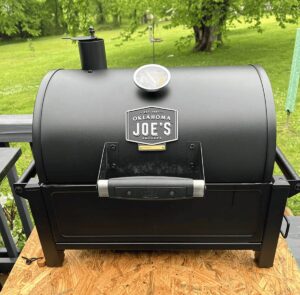
Oklahoma Joe’s® Rambler Charcoal Grill Review: A Comprehensive Guide

Best Portable Smoker for Camping: Top Picks for Outdoor Cooking

50 Most Forgotten Camping Items: Essential Gear You Always Forget to Pack


The best camping saws 2024: portable, lightweight, and effective
